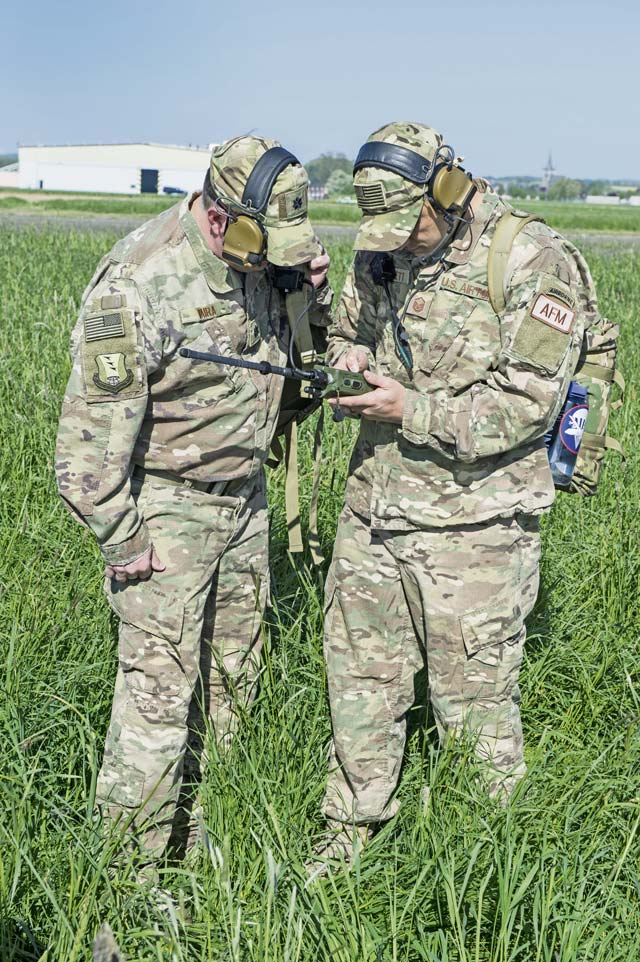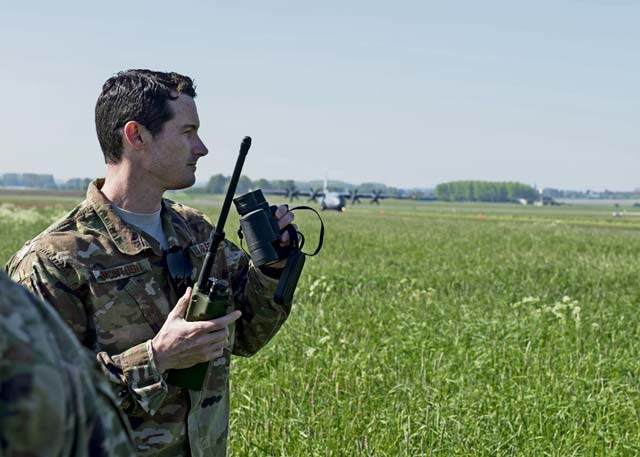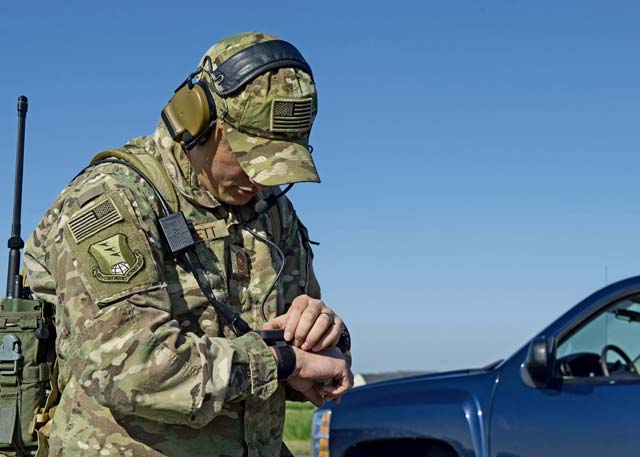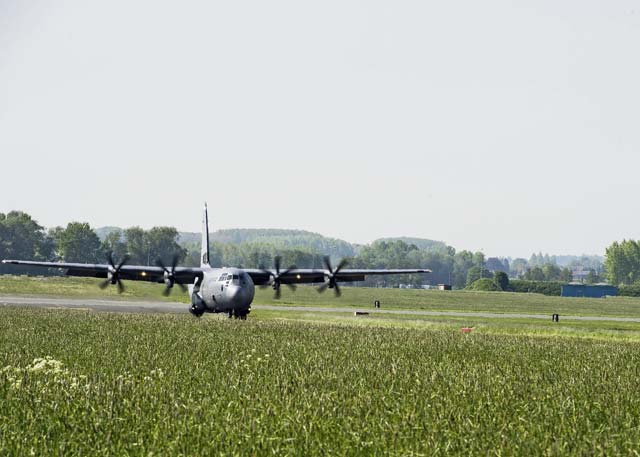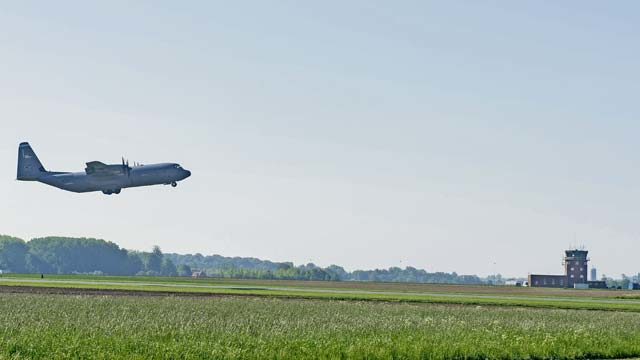
CHIEVRES AIR BASE, Belgium — While operating on a global scale, the U.S. Air Force thrives on the ability to project its air power as far as possible. One of the ways Airmen project airpower is through strategically placed landing zones.
Recently, members from the 37th Airlift Squadron and the 435th Contingency Response Group worked together to survey and test a new landing zone at Chievres Air Base, Belgium.
“We find and use landing zones all across Europe for the purposes of training and projecting air power,” said Lt. Col. Brady Vaira, 435th CRG deputy commander. “In this case, we are using an unused runway at Chievres.”
Another way the Air Force effectively projects air power is by training and perfecting skillsets to be prepared for even unknown conditions.
“This new landing zone measures approximately 3051 feet by 120 feet,” said Maj. Jared Sorensen, 37th AS C-130J Super Hercules pilot. “It allows us to practice austere landing conditions in small landing zone environments. Most runways are 9,000 to 10,000 feet or longer, but downrange it is common for us to land in 3,000 feet or less.”
The new landing zone helps members of the 435th CRG train their landing zone controllers, and expand the capability of the airfield. The end goal for the new landing zone is to open it to all 29 NATO partners for the purposes of training and projecting air power, explained Lt. Col. Craig Lindstrom, 424th Air Base Squadron commander.
“The purpose of the new LZ is to provide a training platform for tactical aircraft that can come in here and practice assault landings and assault take-offs,” said Lindstrom. “This is a unique opportunity because (the new landing zone) is in the European theatre and is accessible to our units
and partners.
